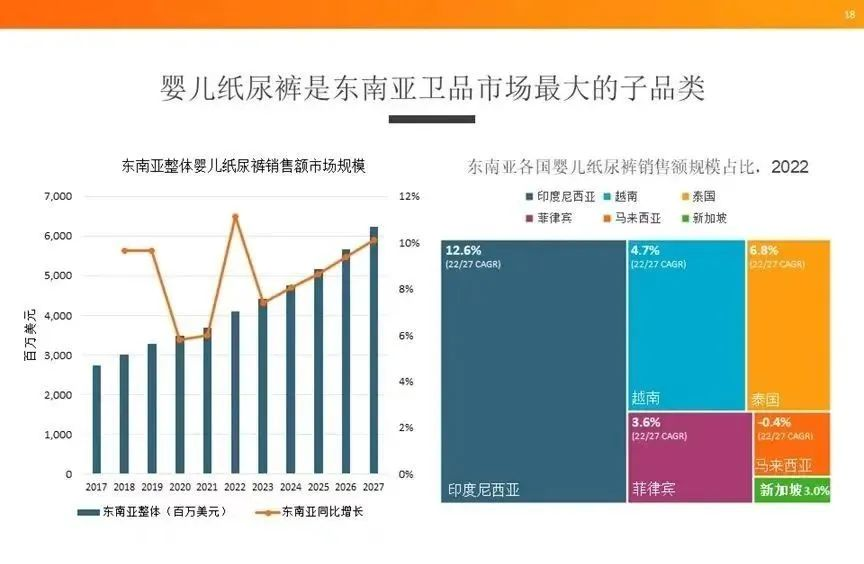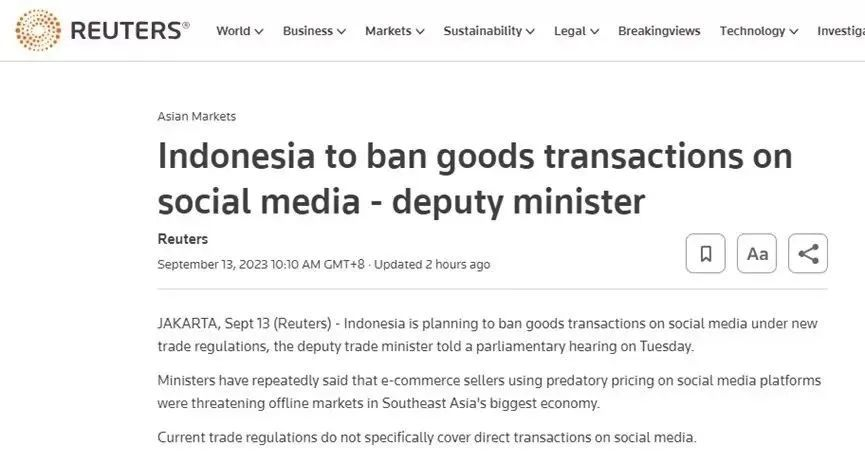Industry News: Baby and child companies compete in Southeast Asia
Industry News: Baby and child companies compete in Southeast Asia: one move to revitalize the overall situation, how to survive from desperate situations and take the market by storm
As the Chinese market becomes saturated, more and more capital is turning its attention to the Southeast Asian market. According to data compiled by Nikkei Chinese Network, the total investment in Southeast Asia by foreign companies led by the United States and China in 2022 reached US$222.5 billion, setting a new record. In recent years, the Southeast Asian market has experienced significant growth in terms of population growth, proportion of children, and demand for maternal and infant products. Whether it is necessities such as strollers, breast milk products, or children's toys, there is a huge demand in Southeast Asia. The growth rate of its infant and child market firmly ranks first in Southeast Asia, which also makes Chinese companies turn their attention to foreign investment in the Southeast Asian market, and it has become a general trend to make gold here.
01
The maternal and infant market in Southeast Asia has set off a craze for Chinese brands. How can companies revitalize the overall situation and take the market by storm?
According to customs statistics, in 2023, my country's cross-border e-commerce exports totaled 1.83 trillion yuan, an increase of 19.6%. At the same time, in 2023, the growth rate of the European and American e-commerce markets will slow down, while the development potential of emerging markets such as Southeast Asia is being further released: the GMV of Southeast Asian e-commerce platforms will increase by 6% in 2023, from US$130 billion to 139 billion dollar. According to data from Euromonitor, the overall retail sales of Southeast Asia's disposable hygiene products market will reach US$6.5 billion in 2022. Baby diapers are the largest sub-category in Southeast Asia's hygiene products market. Last year, the market size exceeded US$4 billion. The year-on-year growth in 21-22 reached nearly 11%. The baby diaper market is expected to exceed US$6 billion in 2027.

As the region with the largest number of newborns in Asia, Indonesia, the Philippines and Vietnam alone account for 90% of Asia's total population aged 0-4 years. However, the market penetration rate of Indonesian diapers is less than 70%, and Vietnam's maternal and infant toy category basically relies on foreign trade imports (import ratio is 80%). At the same time, as a new generation of young people who grew up under the influence of the Internet, they are more receptive to online transactions than the previous generation of parents, pay attention to the cultivation of children, and have more diversified demands for maternity, infant and child products.
On the other hand, the surge in sales of maternal and infant products on TikTok has attracted the attention of many maternal and infant companies. However, the conventional high-investment and high-traffic approach cannot adapt to the complex consumer markets of Indonesia and Vietnam. When traffic enters the funnel model, users will gradually lose and the conversion rate will decrease. Eventually, the traffic scale will become larger and larger, and the customer acquisition cost will become higher and higher. This is an operating cost that many sellers cannot bear. Moreover, TikTok has many operating rules. Once it is violated, it will range from fines to severe reductions in recommendation weights. This is a fatal blow to the enterprise. This also makes the demand for finding local distribution channels and establishing a stable sales network rising day by day.
02
With the help of offline exhibitions, an industry dark horse breaks out!
A maternal and infant company that specializes in baby products made its first attempt to go overseas in Indonesia. It learned from the successful cases of domestic online channels and logged on to Indonesia's major social media platforms with confidence. Starting from social platforms such as Facebook, Instagram, and TIKTOK, we launched online sales and marketing promotion activities. However, a social e-commerce ban issued by Indonesian officials (Indonesia plans to ban commodity transactions on social media) directly cut off the source of orders. There are also signs of social e-commerce shrinking in several other markets, and ultimately the overall return rate is unsatisfactory.

Faced with this series of setbacks, they re-examined the Indonesian market characteristics and consumer needs. They found that the culture and consumption habits of Southeast Asia are very similar to China many years ago. Traditional distribution channels and retailers are still in the expansion stage, so the resources of local partners are particularly important. Without local network resources, it is difficult to open the Southeast Asian offline market . So they actively adjusted their strategy and chose to start with offline exhibitions.
Before the exhibition, they search for buyers who have signed up to visit the current exhibition in advance, select matching buyers and submit them to the platform. The organizer invites these buyers and guides them to the exhibitor booth for negotiation after the buyers arrive at the exhibition.
At the exhibition site, they directly demonstrated the products to interested customers, and through well-trained booth staff, high-quality products and attractive booth design, they attracted many high-quality intended buyers. Many customers placed orders on the spot because of its high-quality products and services.

After the exhibition, the lightweight CRM provided by the organizer's system can be used to continuously manage and follow up on the buyers acquired during the exhibition to improve the efficiency of post-exhibition follow-up. There is also a personalized exhibition report, which summarizes the buyers selected, self-invited and matched by the exhibitors during the exhibition. You can scan the QR code to obtain the buyer information, and the results are clear at a glance. The success of participating in the exhibition also allowed them to enter the Indonesian market and win a place in the Indonesian maternal and infant market.
According to surveys, the average cost of using exhibitions to reach customers is only 40% of the cost of reaching customers through other methods. Based on the average number of visits to an exhibitor's booth, 88% are new potential customers. In three days, exhibitors come into contact with more potential customers than they can in six months or even one year.
At the same time, exhibitions can effectively increase the local influence of enterprises, and the exhibition site also provides opportunities to study the competitive situation. Here, using information about products, prices, and marketing strategies provided by competitors will help you formulate short-term and long-term plans for your business.
03
Sometimes the right choice is better than hard work
Driven by both new consumption and consumption upgrades, the scale of the personal care industry continues to grow. How to realize the integration of all channels and the entire industry chain, obtain the latest procurement information and bidding opportunities, and seek healthy development of the industry? The 2024 PCE Guangzhou International Personal Cares Expo actively responds to the demands of industry development and will be held grandly at the Guangzhou Nanfung International Convention&Exhibition Center. It brings together authoritative experts in the industry and focuses on new industry resources. The exhibition area is 12,000 square meters. It is expected to include 300 high-quality exhibitors covering the entire personal care industry chain and a total of more than 18,000 professional visitors.
Exhibitors cover new major players in the personal care field such as supply chain, brand owners, and ecological resources. The exhibits are richer in content and more comprehensive in categories. A number of industry summits and forums will be held during the same period to professionally interpret market trends, technology applications, laws and regulations. Linking domestic core markets represented by Guangzhou and Shanghai as well as overseas markets in Jakarta, Indonesia, and Dubai, United Arab Emirates, we help Chinese export-oriented enterprises develop emerging markets and expand new business opportunities for maternal and infant exports.




